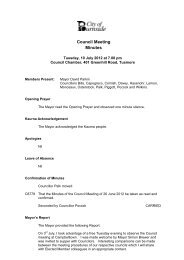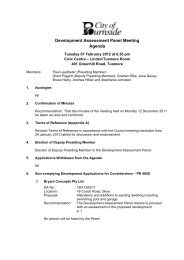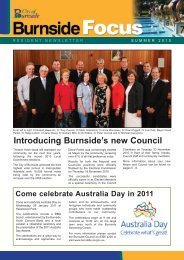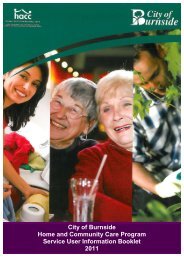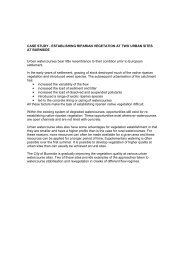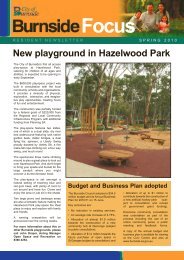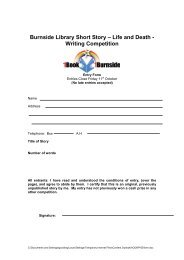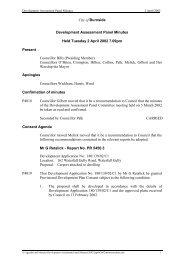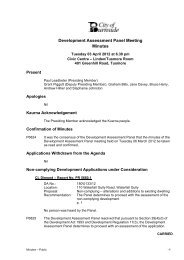Historic Self-Guided Walk Beaumont - Meetup
Historic Self-Guided Walk Beaumont - Meetup
Historic Self-Guided Walk Beaumont - Meetup
- No tags were found...
Create successful ePaper yourself
Turn your PDF publications into a flip-book with our unique Google optimized e-Paper software.
10 House - 15 Sturt PlaceFormerly owned by the Cleland family, this houseis built on a sloping block facing the Common.Notable landscaping features include the matureolives which border the property. These trees areprobably part of the Cleland family’s early olivegroves and are important for this association withthe family.11 Plaque on <strong>Beaumont</strong> CommonMounted on a rock at the western end of the Common, the plaquecommemorates the centenary of Samuel Davenport’s 1849 vesting of thisland ‘in perpetuity for the enjoyment of the inhabitants of the village of<strong>Beaumont</strong>.’ It was passed to the City of Burnside in 1973.<strong>Beaumont</strong> Common vegetationThe numerous survivors of the original pre-European vegetationmake this public space an important conservation area. Over the years<strong>Beaumont</strong> Common has been regarded as a park and has thereforebeen planted with ornamental trees, both native and exotic. Most of thesupplementary planting has taken place around the edges, perhaps withthe object of improving the outlook for residents in the neighbouringarea. Some exotics have also been planted along the creek line.Among the survivors are remnants of the original ‘Black Forest’ whichcovered part of the Adelaide Plains from south-east of central Adelaide,extending roughly from the current suburb of Black Forest to GreenhillRoad and up to, and including, <strong>Beaumont</strong> Common. The name ‘BlackForest’ derived from the dark trunks of the numerous rough-barked gumtrees known as the grey box, Eucalyptus microcarpa. Despite the name,the Black Forest was a grassy woodland of mixed species. The largestspecimen on <strong>Beaumont</strong> Common is probably over 500 years old.The City of Burnside works to protect all indigenous remnant vegetationas part of its biodiversity initiatives. In places it has encouraged the understoreyof local native grasses and planted local shrubs and wild flowers.Mulch is used to suppress weeds and to stop further compaction of thesoil. Mulch under trees indicates that the specimens are almost certainlyremnants from before 1849. In two areas there are fenced enclosuresaround damaged old trees. The soil in the enclosures has a fungal diseasewhose spread can be controlled by exclusion of walkers.The following descriptive list of species is presented in suggested walkingsequence from west to east citing the identification numbers shown onthe map. By following the map it should be possible to find the correctspecimens described in the text.



